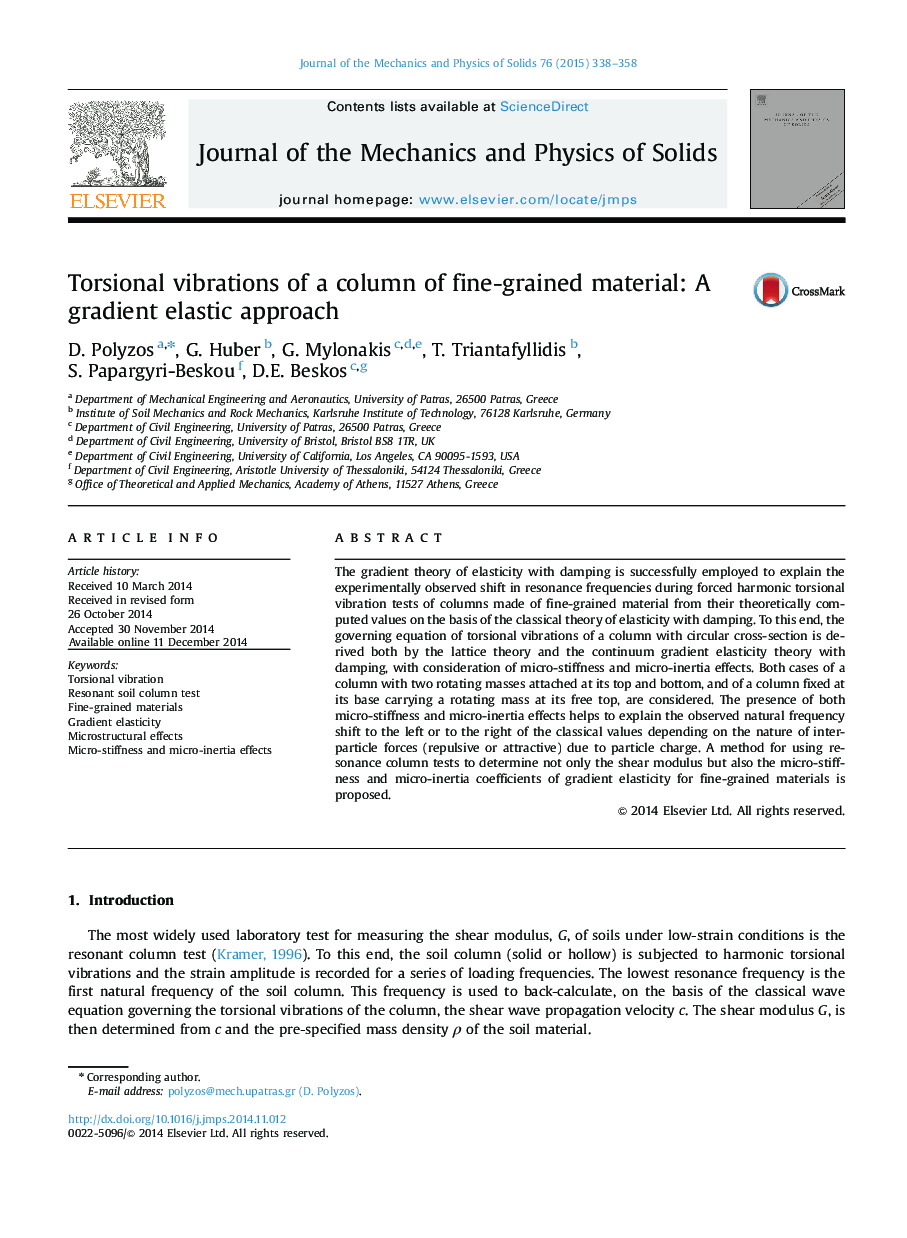| Article ID | Journal | Published Year | Pages | File Type |
|---|---|---|---|---|
| 793088 | Journal of the Mechanics and Physics of Solids | 2015 | 21 Pages |
The gradient theory of elasticity with damping is successfully employed to explain the experimentally observed shift in resonance frequencies during forced harmonic torsional vibration tests of columns made of fine-grained material from their theoretically computed values on the basis of the classical theory of elasticity with damping. To this end, the governing equation of torsional vibrations of a column with circular cross-section is derived both by the lattice theory and the continuum gradient elasticity theory with damping, with consideration of micro-stiffness and micro-inertia effects. Both cases of a column with two rotating masses attached at its top and bottom, and of a column fixed at its base carrying a rotating mass at its free top, are considered. The presence of both micro-stiffness and micro-inertia effects helps to explain the observed natural frequency shift to the left or to the right of the classical values depending on the nature of interparticle forces (repulsive or attractive) due to particle charge. A method for using resonance column tests to determine not only the shear modulus but also the micro-stiffness and micro-inertia coefficients of gradient elasticity for fine-grained materials is proposed.
